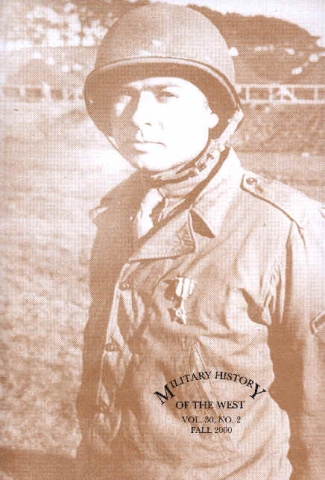Vol. 30, No. 2, Fall 2000
- Vol. 19, No. 1, 1989
- Vol. 21 (Fall 1991), No. 2
- Vol. 21 (Spring 1991), No. 1
- Vol. 22 (Fall 1992) No. 2
- Vol. 22 (Spring 1992), No. 1
- Vol. 23 (Fall 1993), No. 2
- Vol. 23 (Spring 1993), No. 1
- Vol. 24, No. 1, Fall 1994
- Vol. 24, No. 2, Fall 1994
- Vol. 29, No. 1, Spring 1999
- Vol. 29, No. 2, Fall 1999
- Vol. 30, No. 1, Spring 2000
- Vol. 30, No. 2, Fall 2000
- Vol. 31, No. 1, Spring 2001
- Vol. 31, No. 2, Fall 2001
- Vol. 32, No. 1, Spring 2002
- Vol. 32, No. 2, Fall 2002
- Vol. 33, 2003
- Vol. 34, 2004
- Vol. 35, 2005
- Vol. 36, 2006
- Vol. 37, 2007
- Vol. 38, 2008
- Vol. 39, 2009
- Vol. 40, 2010
- Volume 19, No. 2, Fall 1989
- Volume 20 (Fall 1990), No. 2
- Volume 20 (Spring 1990), No. 1
- Volume 25, No. 1, Spring 1995
- Volume 25, No. 2, Fall 1995
- Volume 26, No. 1, Spring 1996
- Volume 26, No. 2, Fall 1996
- Volume 27, No. 1, Spring 1997
- Volume 27, No. 2, Fall 1997
- Volume 28, No. 1, Spring 1998
- Volume 28, No. 2, Fall 1998
- Indices

MILITARY HISTORY OF THE SOUTHWEST - TOC -2000
Vol. 30, No. 2, Fall 2000
Table of Contents
"Progress Toward Professionalism: The Alabama National Guard on the Mexican Border, 1916-1917," by Ruth Smith Truss
Abstract: In June 1916 President Woodrow Wilson federalized the National Guard for Mexican
border service. Because of the training and experience offered by this service, Alabama's
Guard made great progress in becoming a more efficient, cohesive, and professional
military organization. The value of such progress became evident in the Guard's contributions
in World War I.
Key Words: National Guard; Alabama; Mexican border service; Arizona
"A Texan at War: Sergeant Travis Moore, U.S. Marine Corps, 1942-1944," by Robert J. Robertson
Abstract: Travis Moore, a Texas Marine during World War II, served with the 8th Marines in
Samoa, Guadalcanal -- where he was awarded the Silver Star -- New Zealand, Hawaii,
and Saipan -- where he lost his life. As his letters home show, Moore was reluctant
to volunteer but willing to give his best; he longed for home but readily did his
part in the Pacific War.
Key Words: World War II; Marines; Guadalcanal; Saipan
"Arrow Wounds and the Military Surgeon in the West," by Volney Steele
Abstract: During the Indian Wars of 1850-1890, military surgeons had to treat arrow wounds,
a type of injury for which the surgeons had little training or experience. Using innovative
instruments, their knowledge of anatomy, and surgical principles as ancient as war
itself (including drainage, debridement, and removal of foreign material), these physicians
achieved surprisingly successful results. Their performance was even more remarkable
in view of the prevailing rudimentary understanding of bacteria, antiseptic techniques,
and postsurgical care.
Key Words: bow and arrow; arrow wounds; hemorrhage and peritonitis; drainage and debridement;
Joseph H. Bill; military surgeons